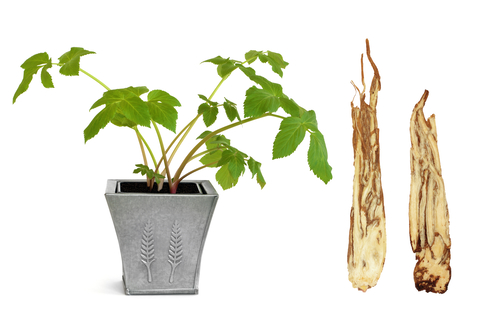Angelica Root

Also known as Angelica archangelica, Garden Angelica, Great Angelica, and Wild Parsnip.
Introduction Angelica is the European cousin of the more familiar dong-quai. A graceful flowering plant related to carrots, dill, and fennel, angelica is found as far north as Nunavut and Lapland and as far south as Syria and South Carolina. The plant has an intense yet sweet aroma more like carrots than like dill or fennel.
Constituents Psoralens, bergapten, beta-sitosterol, coumarins, limonene, umbelliferone.
Parts Used Dried root.
Typical Preparations As a tea, in capsules, and as an herbal extract.
Summary The traditional uses of angelica included treating tumors, boils, and furuncles, relieving swollen gums, and forcing vomiting to treat food poisoning. Research published as recently as February, 2005, confirms that angelica contains compounds that may prevent the proliferation of tumor cells, at least under laboratory conditions.
Modern herbalists most often use this form of angelica to relieve loss of appetite, flatulence, and gastrointestinal spasms, and to treat the pain of hacking cough, menstrual cramps, and urinary tract infections. Angelica has a long folk-history of use as a medicinal herb, in particular for the treatment of digestive disorders and problems with blood circulation.
Precautions Avoid excessive exposure to sunlight if using angelica oil. Do not take angelica and eat celeriac (celery root) as a vegetable if you tend to sunburn. The safety of angelica for pregnant women and nursing mothers has not been established and its use is not recommended.
PURCHASE ANGELICA ROOT EXTRACT HERE
For educational purposes only.
This information has not been evaluated by the Food and Drug Administration.
This information is not intended to diagnose, treat, cure, or prevent any disease.
This information courtesy of MOUNTAIN ROSE HERBS, with full, written permission for reuse. For further traditional information concerning Angelica, please visit this excellent resource from Botanical.com. Used with full, written permission.






